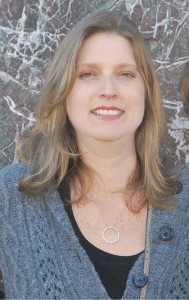The changes came about gradually. So gradually, that it is very difficult to pin-point exactly when the overall change became larger than the sum of individual changes and became something that was difficult to ignore. For my whole life, I was “Marian” and then one day, I was someone else. I had become someone unrecognizable: the “Not Marian.”
One of my favorite books, “The Tipping Point,” by Malcolm Gladwell, expands on the premise that little changes make a huge difference. Individually, the changes I experienced were easily explained. I was tired. I had night-time hot flashes. I gained weight. I was moody and forgetful. My sight was blurry. I often typed or said the wrong word. I couldn’t sleep. I couldn’t remove my rings without soaping up my finger first. One day, I forgot how to roll down my car windows. I experienced moments of panic when I was driving and couldn’t remember what road I was on or where I was going. When I mentioned any or all of these symptoms in a group of women over forty, I heard a cavalcade of similar stories, usually expanding into an animated discussion centering on menopause and aging.
I also noticed that I stopped getting compliments. People just didn’t say that I looked nice or pretty anymore. I tried not to be vain; I thought I’d probably just aged enough that I was no longer going to get the attention that I used to get. I had “hit” the proverbial “wall.”
It is easy to look in a mirror and only see a stylized version of yourself. But, photos are more precise. For some time, I had noticed something “off” in the photos that were sometimes posted of me on-line. They just didn’t look like me anymore. I untagged myself and brushed them off as bad photos with only the vague realization that the “Marian” I thought I was, was no longer me.
My epiphany came in the form of the photos on my work identification cards, taken about three years apart. Not only did I look like I’d aged about ten years — I also looked completely different. My face was much fuller, my features distorted, my eyes sunken, my hair stringy, and my skin was sallow. I looked like a bad photo copy of my former self.
Now, I realize that how I look is a small part of who I am as a person. However, it is also the part of me that everyone sees first. I remember being in the dressing room at Target and catching a glimpse of the “Not Marian” in the mirror. I was astonished at my reflection and cried.
A friend suggested that I just realize that this “Not Marian” is who I am now. I don’t think that this is bad advice; it is just advice that is easy to say, but difficult to follow. I often compare my sense of futility regarding my desperate attempts to become “Marian” again to Hercules’s labor of cleaning the Aegean Stables. I exercised four or so times a week. I went to a diet doctor. I ate under 1200 calories a day. I bought new clothes. I got my nails done. Despite these efforts, I only saw minor improvements in the way I looked and felt. I still felt as though I was always wearing a rubber suit over my skin that covered my former self.
My diagnosis process was a little complicated. In July of 2010, I had an MRI which showed a pituitary tumor and then a CT showed something suspicious on my adrenal gland. Several cortisol tests were high and I was referred to NIH, only to discover that I didn’t have a pituitary tumor, but did have a benign adrenal tumor. Unfortunately, repeated tests showed my cortisol levels to be normal until April of 2012, when I was diagnosed with Cushing’s.
In many ways, the diagnosis of Cushing Syndrome was a relief. Finally, there was an explanation for the way that I felt and, though serious, Cushing’s is generally curable. I knew that my surgery was not a panacea, though it was nearly impossible not to view it as such. I scrolled through hundreds of websites and blogs looking at photos and reading synopses of people before and after treatment. I connected with someone who was successfully treated for Cushing’s syndrome through the Cushing’s Support and Research Foundation. Ultimately, my hope was that the loss of me was only temporary and that through successful treatment of the disease; I would be able to feel like “Marian” again.
The surgery itself was easy. The NIH doctors removed the tumor and my left adrenal gland in August of 2012. I was able to get up and move around pretty much right away. However, I was totally unprepared for the absolute and total exhaustion that followed as I underwent cortisone withdrawal.
Because the tumor was producing so much cortisol, my remaining adrenal gland shut down. I had to take hydrocortisone to survive but there was a limit to how much I could take — the dose had to be very minimal to encourage the remaining adrenal gland to wake up.
Additionally, I had become accustomed to the higher cortisol levels. Surviving on a biologically minimal dose was painful and disheartening. My best description on how it all felt is “waking from the dead.” Getting up in the morning was like climbing out from under a cement blanket; I was completely drained before I even started my day. I had to drag myself to work and rest when I got home. The doctors later total me that cortisol withdrawal is worse than heroin withdrawal.
Despite the fatigue, in so many ways, I felt much better. I was able to sleep and the “electrified” feeling was gone. But the constant and utter fatigue was discouraging. I wanted to be better. And even more so, I (and my friends and family) thought that the surgery would fix the problem right away. I also believed that since I wasn’t as bad as many Cushing’s patients, I would heal faster than everyone else. Was I wrong! It was over 18 months before I was healthy enough to wean off of the hydrocortisone.
I, like many Cushing’s patients, thought that if I weaned myself off of the hydrocortisone faster, that would somehow stimulate my remaining adrenal to begin working. I’m sorry to say that it doesn’t work that way. I wish it did. What self-weaning did do was make me more tired and put me in jeopardy of adrenal crisis.
During this period, I continued to visit NIH for my ACTH stimulation tests, which is a half day long process in itself. I failed them one by one (five times). Each failed test felt like validation that I wasn’t as strong as I thought I was. Another set-back. It was a difficult time. Finally, in November 2013, I passed the test (just barely) and began the process of weaning. Weaning itself was easy because my adrenal was finally working properly. I was able to do it within a month and a half.
As I began to feel better, I started exercising, sporadically at first then regularly. When I started running, it was less than a mile a week in August of 2013. I have gradually worked up to about eight to fifteen miles a week. Trail running has been my salvation – it is my time to meditate and reflect. I truly miss it when I don’t have enough time to run. As an on-and-off exerciser, that was really a huge surprise.
Losing weight was very easy after I weaned. I lost about 25 pounds from January 2013 until October 2014 (I’m 5’10” and now about 135 pounds). Just because I felt better, I also focused a bit more on my diet, trying to incorporate more organic fruits, vegetables, and whole grains into the mix. I mostly eliminated beef and pork, and try only to eat meat once a day. I have to be honest though, there is a certain happy freedom that comes from being able to eat like a normal person and still lose weight. On the weekend, I usually eat a big “everything” bagel with real cream cheese and lox and I don’t count the calories like I would have before I was cured. I do still very occasionally drink alcohol, but it isn’t a daily glass of wine like before (when I felt like I needed it…).
Pretty much everything that I had before – high blood pressure, high cholesterol, swelling, night sweats, aches, brain fogginess etc., are all gone!
So, here is the happy ending: I feel amazing! Everything is glorious and sparkling, and I am thankful for every single day that I get to live in this incredible world. I know it sounds crazy, but that is really how I feel. I sometimes catch myself staring at the sky or the trees in awe of the beauty than I was too sick to see before. In many ways, I am grateful for Cushing’s as it has allowed me to be more present and aware of how lucky I am.
Member: 121999
Newsletter: Summer, 2015
State: Virginia






Sorry, comments are closed for this post.